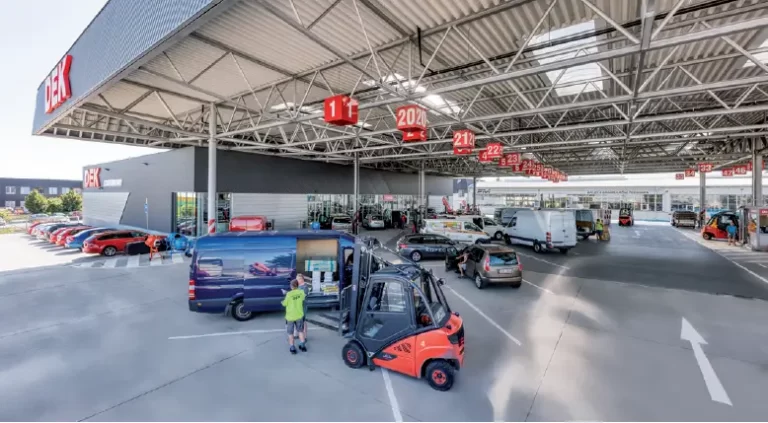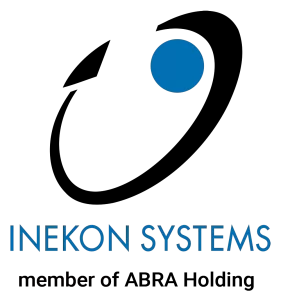In 2009, when most companies were cutting their investments, DEK went against the flow and invested – specifically into a change to their processes and into their systems. At that time, the group consolidated revenue was a little over CZK 6 billion, and it was not as well-known as today. The company management was convinced that once the crisis ends, speed and readiness to adapt to the new market environment will be decisive. Investing during the crisis turned out to be the right call for the company – the group’s consolidated revenue now exceeds CZK 20 billion, and DEK Stavebniny is by far the dominant player on the Czech construction materials market, one that is a frequent topic in prestigious media. We asked Ing. Jan Bolek, financial director at DEK and who has been steering the DEK group’s finances since 2011, about this voyage, full of difficult decisions and risks over the past 11 years.

How is your company managing the current crisis – one that brought the country’s economy to a virtual standstill in the spring?
We have actually been operating throughout. The government restrictions during states of emergency only affect our end customer retail sales, but we continued dealing with corporate customers and, in the second wave, were even able to quickly offer a contact-free dispatch option, where customers do not come into close contact with operators. Construction alterations are one of the few activities that people can still freely engage in.
What do you appreciate most about BNS in this “coronavirus” time, as far as company management and its future are concerned? Does it offer advantages?
For us, BNS is a set of sensors telling us how the situation is developing. It is interesting to go through the sales reports and see the trends in individual segments. And that is especially true now, when such events have never been seen before and the future is difficult to predict based on historical experience. Furthermore, BNS continuously helps us manage the economic sustainability of our costs, which is also particularly good in today’s situation.
How does this crisis differ for you compared to the one in 2009?
It is not a gradual change like the one 11 years ago – it arrived almost immediately. Moreover, today’s crisis is not the result of financial, intangible reasons – the reason is purely physical, and people’s behaviour has also changed – sometimes in unexpected ways. 2009 marked the start of 8 difficult years for the construction industry. Few remember it today, but in January 2008 the VAT on new housing was raised from 5% to 9%. This meant that companies raced to finish their projects in 2007 and customers bought whatever was available. Some of the projects transferred over into the first half of 2008, but after that demand dropped – at first due to the VAT changes – that we ourselves were responsible for – and then due to the “imported” global financial crisis.

Still, back then the DEK group management decided to search for a new system to support company management. Was that not a bit risky at that time?
At that time DEK was undergoing a transformation from a single company to a holding, and that was why a “smarter” solution to management was needed – regardless of the crisis. Having BNS help us manage the company during the crisis was then a second, added benefit. We were able to effectively plan and optimize our costs in greater detail while taking into account more context.
If you look back now, was it a good idea to introduce a new system during a crisis? Was it worth it? Would you do it again?
Definitely yes. It gave us control over our costs and cost management. Additional beneficial effects could also be secured (e.g., in the area of sales), and these could quickly outweigh the initial costs of implementing such a system.
Without a management system, we would certainly have failed to get the controlling support ready for the aforementioned growth. And even if we had managed, it would have been such a lot of work, the results would not have been as accurate, and it might have required a larger team. At the same time, BNS does not just support controlling processes, but also accounting ones. Although it was not exclusively thanks to BNS, but we were able to keep the growth of staffing needs at our accounting department significantly lower than turnover growth.
You have been using BNS for over 10 years – how would you evaluate its development?
I like the changes that have been performed as the system developed. BNS is more robust, safer, and of course faster – and this also impacts the volume of the processed data – yet what I liked most was the transition to use via a web browser, potentially opening up a truly mobile approach to data.
As BNS 4.0 users, what would you consider its greatest benefits for you and your work, and for DEK as a whole?
One technical contribution has been the effective management of users and their data-access rights. From the user’s side, what I consider important are the steps made towards mobile reporting and intelligible planning, in which we can now involve more key people. Moreover, we also try to stay at the cutting edge of the state of the art through the ability to handle large data volumes.

So, if I understand correctly, forecast creation will in the future involve more people than before. Are you also considering any specific BNS expansion, e.g., by adding Workflow for planning?
Yes, that is certainly one of our goals. At first probably in the area of financial plans for individual companies, and later in detailed business plans where one could aim for potentially even greater efficiency improvements for today’s processes.
You once said that for you BNS means less time spent searching for slow-selling items worth “a few pennies”. Could you please elaborate on that?
A well-designed system should be able to point real problems out to you. For instance, consider the following two situations: you have CZK 1 000 worth of one item in stock which recorded no sales in a year, and on the other hand you have CZK 1 million of another item in stock that is very popular, yet the turnover time dropped from 30 days to 60… the first thing is easy to identify, but not very valuable for management. It is much more important to identify the second – that allows you to start solving problems in advance, because a reduced turnover time usually signals that something is happening, and you need the option to react in time.
You started using deeper sales analyses in the first half of this year. What improvements have you seen?
We have seen concrete improvements in inventory management – we have introduced new reporting for all branch offices, identified the correct KPIs, and now have this area successfully under control.
The key to further advantages lies primarily via visualization, which will help us identify new trends sooner, whether in sales, margins or inventory turnover. We are currently preparing a new version of our reports for colleagues, and these will make use of such elements.
How well does BNS allow you to control your future and create plans that will help DEK survive a potential recession, just as it did back then at the beginning?
BNS is an excellent tool that allows you to understand how things are linked to each other and helps separate the things that matter from those that do not – in turn guiding the direction of your thoughts. Strategic thinking is, however, also a crucial component, especially in turbulent times.
Do you or other people at DEK think that the time we currently live in will require some changes to – or place other demands on – the systems you are currently using, especially BNS?
This year’s pandemic accelerated and deepened the bottom phase of the economic cycle, however some cooling down was generally expected in any case. From this viewpoint I do not see it as a fundamentally new piece of information that will lead to a reassessment of the tools used so far.

On the other hand, we all also see that management and analytical work is now concentrated in smaller teams or individual home offices, while in-person presentations and meetings have been replaced by their online counterparts or even asynchronous communication by email, lists of tasks in collaborative environments, etc.
Information transfer thus cannot rely on one person who prepares a nice presentation about a given topic. On the other hand, we need to make sure the data everyone needs will remain available, in the standard high quality, and as soon as a person needs or wants to see that data.
As far as the systems we use are concerned, these few years have clearly shown us that each of them has their place in the overall architecture. The ERP system is of course required for operative work and the handling of individual business transactions. BNS is an environment for standardized reporting that is accessible to a wide range of users, and also a place for planning and modelling. Tableau is a popular tool for analysts, who especially like its ability to create ad hoc reports and the help it provides when navigating a new, perhaps rough dataset. Tableau’s outputs can then inspire further ideas for new BNS reports.
The impact of the coronavirus on the Czech economy could be crushing for many companies. Would you recommend that companies still without a management system get one at this time?
I would recommend it to everyone for whom the complexity of processes – production, trade, or organization – exceeds what can be optimized inside a single head, for instance that of the owner or CEO. The potential benefits will in this case almost certainly outweigh the purchase price – they only need to be discovered.
Improving management quality via systemic support can in this sense be a way out of the crisis. For us, information from BNS is the starting point for our considerations about the future, while the measures and plans are of course then up to us – no system can take care of that for us (at least for now).
If the economy starts growing again (or at least starts recovering) within a reasonable time horizon, the companies that will most profit will be those that survive the depression without reducing their potential – whether this means reducing production or firing trained employees they made great efforts to hire.
Contact us
Newsletter
Read the latest news from financial planning and BI data processing, as well as invitations to interesting events and webinars. We will send you inspiring content a maximum of 4 times a year.
Newsletter
Read the latest news from financial planning and BI data processing, as well as invitations to interesting events and webinars. We will send you inspiring content a maximum of 4 times a year.
© 2023 INEKON SYSTEMS s.r.o., the member of the ABRA Holding group, Jeremiášova 1422/7b, 155 00, Praha 13, Czech Republic, IČO: 27252167. Processing of personal data policy.



